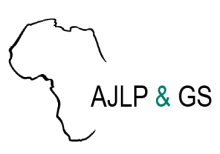Land Library Search
Through our robust search engine, you can search for any item of the over 73,000 highly curated resources in the Land Library.
If you would like to find an overview of what is possible, feel free to peruse the Search Guide.
/ library resources
Showing items 1 through 9 of 61.Maize is a critical staple cereal across Sub-Saharan Africa but attempts to improve its productivity in small-scale farming systems often prove disappointing.
Livestock route and related resources mapping, understanding their status and better protection of the routes in the pastoral areas are the first steps towards developing the areas.
A range of studies have highlighted the negative impacts of Covid-19 disruptions on incomes, food and nutrition security among rural agricultural communities in developing countries.
Agriculture consumes the largest share of freshwater globally; therefore, distinguishing between rainfed and irrigated croplands is essential for agricultural water management and food security.
Context and backgroundThroughout history, the severity of coastal impacts has varied depending on social and environmental factors.
The area along North Wollo Amhara and neighbouring Afare regional states have been exposed to small scale prolonged violent communal resource conflicts. Many factors drive and triggers for these violent conflicts which includes institutional, political, economic, and environmental change.
Context and objectives:Climate extremes associated with wet and dry conditions are one of the main causal elements of the disasters that adversely impact Uganda`s agriculturally based economy.
East and Southern Africa is a climate hotspot, with more than US$45 billion in agricultural production at risk from higher temperatures, shorter growing seasons, and more extreme droughts and floods.


